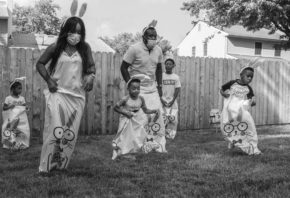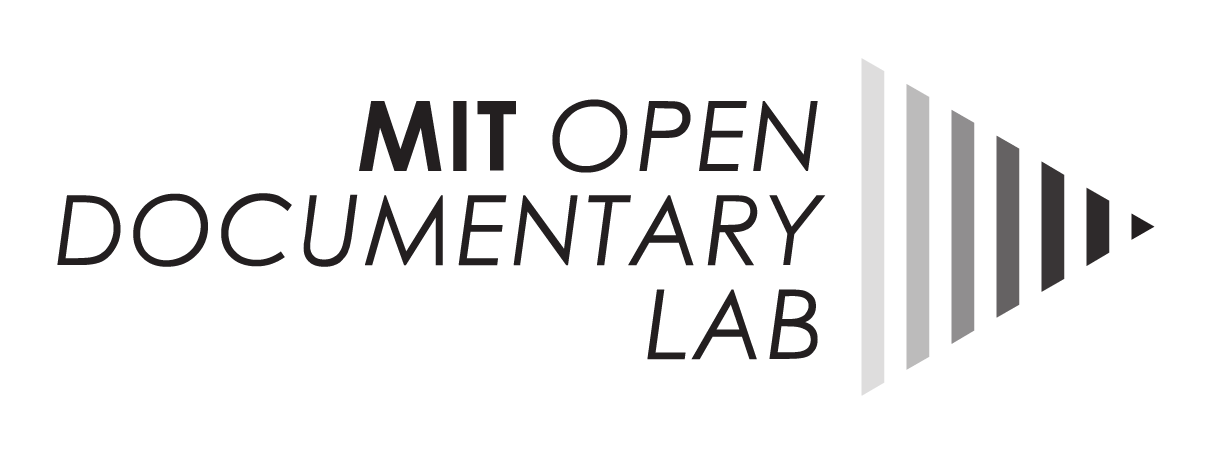28 Mar MIT & BPM Fellow Andrea Walls on her Fellowship Experience and The Museum of Black Joy
 Andrea Walls is a conceptual artist using a genre-inclusive, multimedia approach to storytelling, and a recipient of the MIT & Black Public Media Fellowship, hosted by MIT Open Documentary Lab (ODL) and sponsored by MIT Center for Art, Science, & Technology (CAST). Her work as a poet, photographer and digital artist is informed and inspired by the writers and visual artists of the Harlem Renaissance and Black Arts Movement. During her fellowship, Walls is working on The Museum of Black Joy, an interactive archive, a hybrid exhibition space and living document of non-traumatic Black Life in Philadelphia and beyond. Read the short Q&A below to learn more about her fellowship experience and project.
Andrea Walls is a conceptual artist using a genre-inclusive, multimedia approach to storytelling, and a recipient of the MIT & Black Public Media Fellowship, hosted by MIT Open Documentary Lab (ODL) and sponsored by MIT Center for Art, Science, & Technology (CAST). Her work as a poet, photographer and digital artist is informed and inspired by the writers and visual artists of the Harlem Renaissance and Black Arts Movement. During her fellowship, Walls is working on The Museum of Black Joy, an interactive archive, a hybrid exhibition space and living document of non-traumatic Black Life in Philadelphia and beyond. Read the short Q&A below to learn more about her fellowship experience and project.
What interested you about this fellowship?
I am attracted to the idea of fellowship; especially, as a self-taught and historically under-resourced artist. Moving in the company of “fellows” invites me into the rich, inspirational atmosphere of dynamic creators and visionaries. I wanted to put myself in a challenging position in order to learn and grow with artists who are using new technologies in exciting ways to engage audiences across genres and who are making such astonishing work.
What stage is your project in?
 The Museum of Black Joy™ was started in January of 2020 as a photojournalistic/ digital art project to document non-traumatic Black Life in Philadelphia and beyond. It is evolving to inhabit a multiplatform, multi-dimensional space, including immersive technologies. The overall intention is to cultivate, celebrate, commemorate and circulate stories that center Black Joy. As the project evolves, it seeks to maintain balance between holding ground as an established archive and a constantly refreshing landscape for spreading joy as a revolutionary practice and process. We are currently at the beginning stage of expansion into the immersive field of play.
The Museum of Black Joy™ was started in January of 2020 as a photojournalistic/ digital art project to document non-traumatic Black Life in Philadelphia and beyond. It is evolving to inhabit a multiplatform, multi-dimensional space, including immersive technologies. The overall intention is to cultivate, celebrate, commemorate and circulate stories that center Black Joy. As the project evolves, it seeks to maintain balance between holding ground as an established archive and a constantly refreshing landscape for spreading joy as a revolutionary practice and process. We are currently at the beginning stage of expansion into the immersive field of play.
What have you learned in the process?
Most importantly, I have learned what’s possible. Being introduced to the extraordinary work of others in the cohort has been a wonderfully overwhelming experience. It is also transformational to see and understand the relationship between creating functional teams and using co-creation strategies to create environments. “Success” is achieved through high levels of community/audience engagement.
What has been your favorite part of the process?
I enjoy being in the room. I enjoy the combination of ODL member presentations and guest artist presentations. I enjoy the process of learning through the enriched dialogue, thoughtful exchange of ideas and ready sharing of resources. Just copying the chat after every virtual engagement feels like a master class in everything!
Why is this topic/story important?
After everything I’ve been through in a lifetime, to say nothing of these last 2 years, I’ve decided that joy is the only sane way forward. The Museum of Black Joy™ is a strategy for wellness in an unwell world. Black Joy as a ritual response to trauma is a literal wellspring, from which I intend to drink. This work is my way of reflecting and replenishing the source.
What medium did you select to share this story/topic, and why?
I am interested in immersive media as a means to provide a counterweight to the narrative experience that is often a signature of virtual space: violence and war. I hope to offer a parallel paradigm where joy is centered in our immersions into and away from “reality.”
What has your experience been of the MIT-BPM Fellowship so far?
The experience has been creatively expansive, emotionally and intellectually challenging and as rigorous as I hoped/expected. I have been stunned by the generosity of the cohort, the willingness and capacity to share knowledge and resources is the greatest takeaway, so far.



